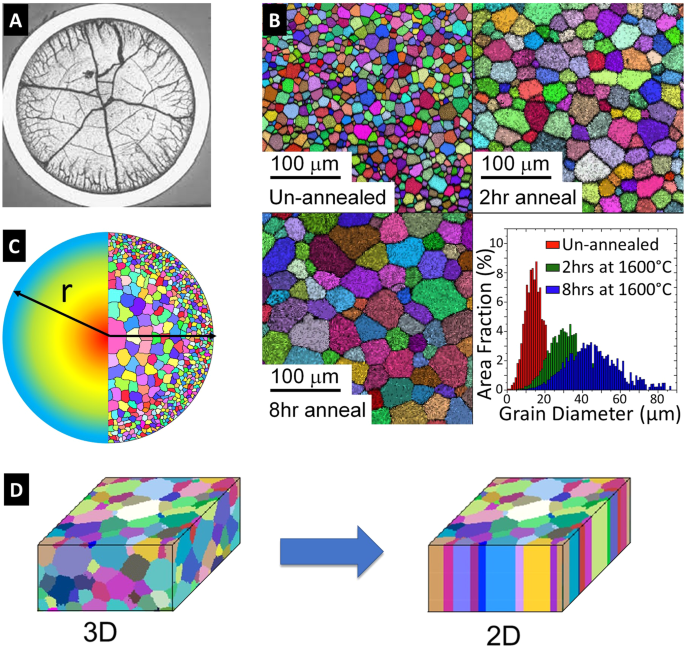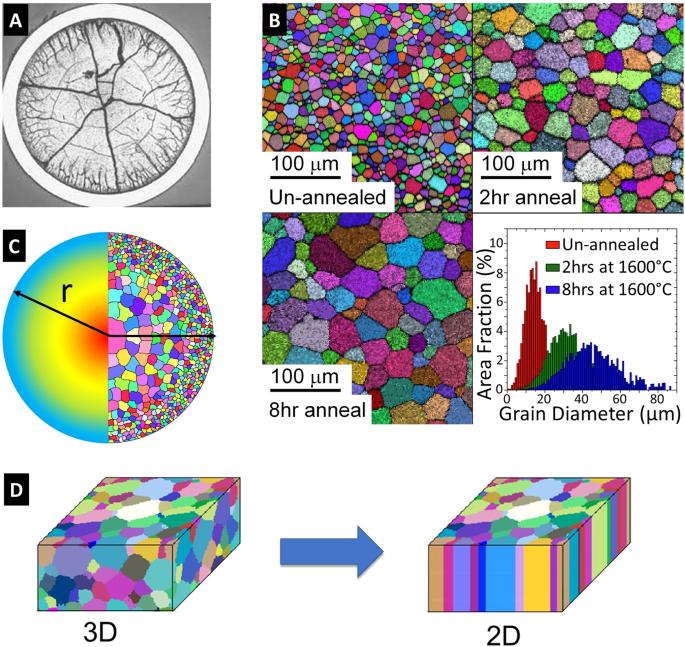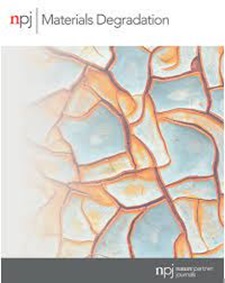Polyepitaxial grain matching to study the oxidation of uranium dioxide
IF 7.6
2区 材料科学
Q1 MATERIALS SCIENCE, MULTIDISCIPLINARY
引用次数: 0
Abstract
Although the principal physical behaviour of a material is inherently connected to its fundamental crystal structure, the behaviours observed in the real-world are often driven by the microstructure, which for many polycrystalline materials, equates to the size and shape of the constituent crystal grains. Here we highlight a cutting edge synthesis route to the controlled engineering of grain structures in thin films and the simplification of associated 3-dimensional problems to less complex 2D ones. This has been applied to the actinide ceramic, uranium dioxide, to replicate structures typical in nuclear fission fuel pellets, in order to investigate the oxidation and subsequent transformation of cubic UO2 to orthorhombic U3O8. This article shows how this synthesis approach could be utilised to investigate a range of phenomena, affected by grain morphology, and highlights some unusual results in the oxidation behaviour of UO2, regarding the phase transition to U3O8.


研究二氧化铀氧化的多外延晶粒匹配
虽然一种材料的主要物理特性与其基本晶体结构有着内在联系,但在现实世界中观察到的特性往往是由微观结构驱动的,对于许多多晶材料来说,微观结构等同于组成晶体晶粒的大小和形状。在此,我们重点介绍一种尖端的合成方法,用于控制薄膜中的晶粒结构,并将相关的三维问题简化为不太复杂的二维问题。该方法已应用于锕系元素陶瓷二氧化铀,复制了核裂变燃料芯块中的典型结构,以研究立方氧化铀到正方氧化铀的氧化及随后的转化过程。这篇文章展示了如何利用这种合成方法来研究受晶粒形态影响的一系列现象,并重点介绍了二氧化铀氧化行为中有关向八氧化三铀相变的一些不寻常结果。
本文章由计算机程序翻译,如有差异,请以英文原文为准。
求助全文
约1分钟内获得全文
求助全文
来源期刊

npj Materials Degradation
MATERIALS SCIENCE, MULTIDISCIPLINARY-
CiteScore
7.80
自引率
7.80%
发文量
86
审稿时长
6 weeks
期刊介绍:
npj Materials Degradation considers basic and applied research that explores all aspects of the degradation of metallic and non-metallic materials. The journal broadly defines ‘materials degradation’ as a reduction in the ability of a material to perform its task in-service as a result of environmental exposure.
The journal covers a broad range of topics including but not limited to:
-Degradation of metals, glasses, minerals, polymers, ceramics, cements and composites in natural and engineered environments, as a result of various stimuli
-Computational and experimental studies of degradation mechanisms and kinetics
-Characterization of degradation by traditional and emerging techniques
-New approaches and technologies for enhancing resistance to degradation
-Inspection and monitoring techniques for materials in-service, such as sensing technologies
 求助内容:
求助内容: 应助结果提醒方式:
应助结果提醒方式:


